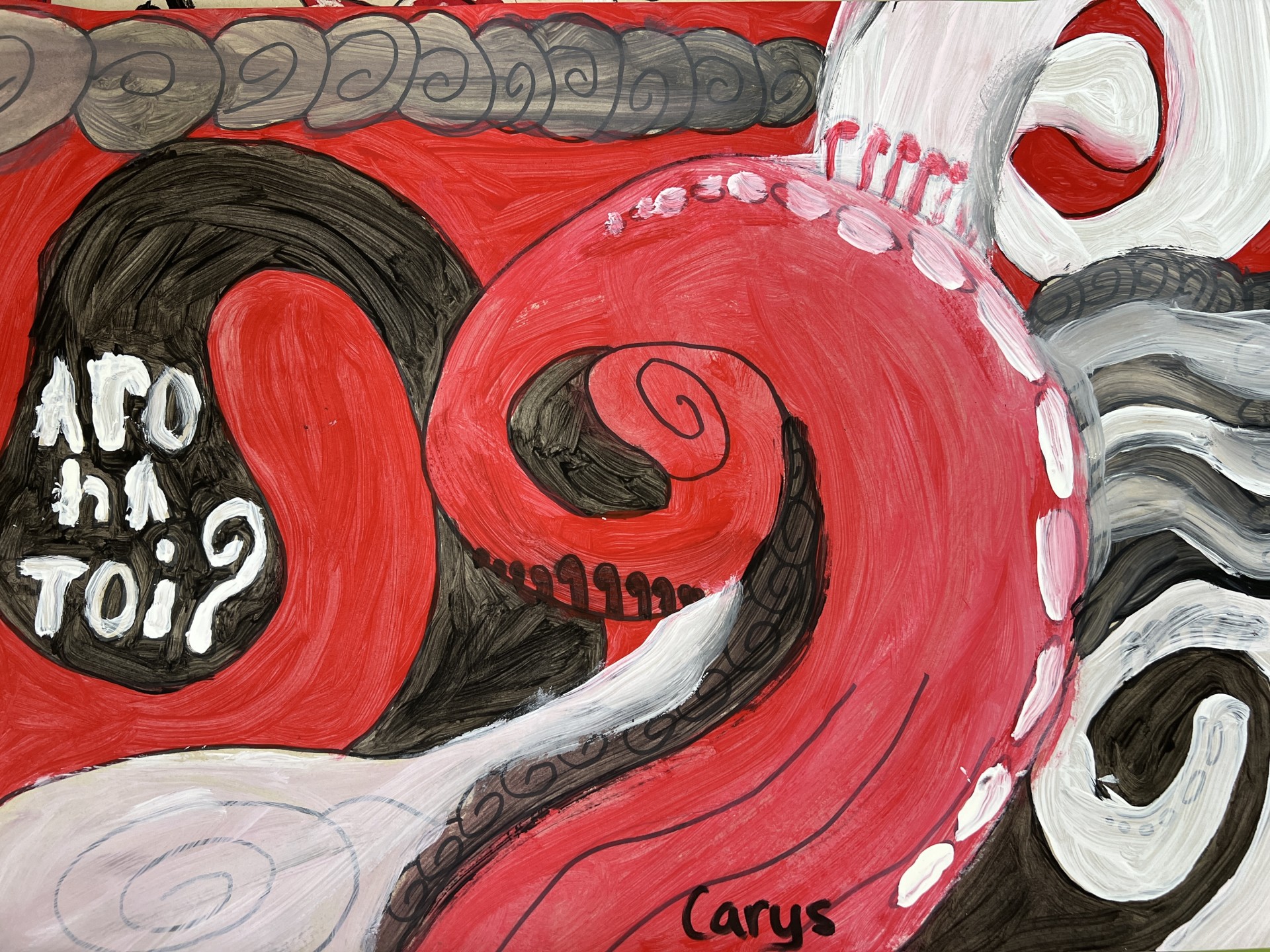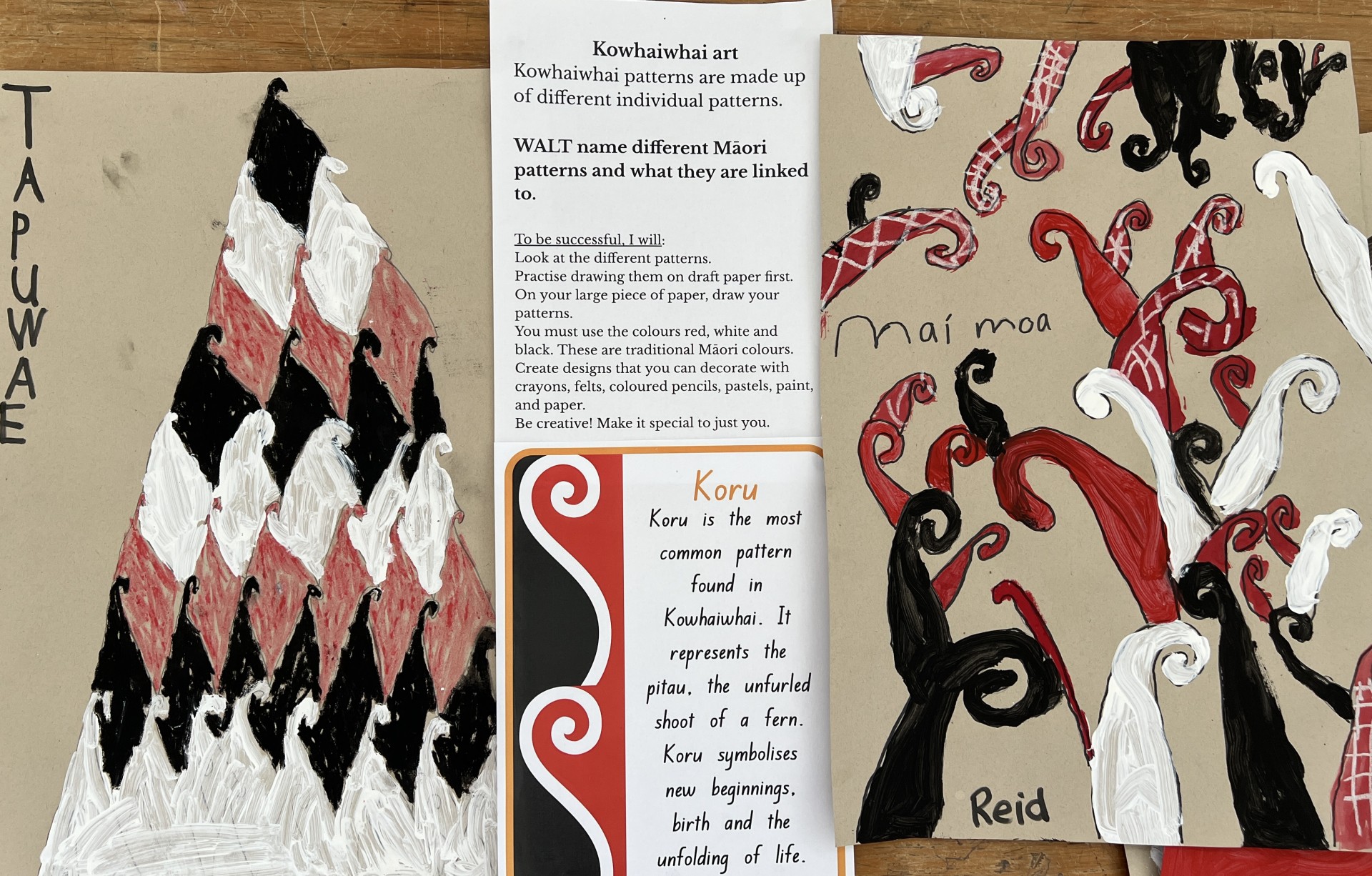Kōwhaiwhai are Māori motifs and are a visual expression of Māori culture, made of intricate and curving linear patterns. They are a way to tell a story and each one has its own meaning. Kōwhaiwhai patterns are visible in wharenui, on waka or on other forms of carving.In visual arts at the Year 5 and 6 , students “investigate the purpose of objects and images from past and present cultures” to allow them to understand the arts in context. They are able to develop ideas “in response to different motivations, adding their own observations and imagination.” (NZ Curriculum) Even though they are a traditional art form, kōwhaiwhai patterns continue to evolve and, as contemporary artists, students may incorporate new techniques, materials, and styles.
I chose the word ‘tunu’ which means cooking and baking. I really like baking and I can see things cooking in my patterns.
I included a lot of different words in my art. It tells a story about the land, the water, the mountains. Mine is called ‘Te Koru o te Whenua o te Māori’.
It says ‘Harikoa’ here because that means very joyful. Art makes me feel joy.
I chose the mangōpare kōwhaiwhai and I wrote mangōpare because it means strength and it looks like a hammerhead shark.
‘Aroha’ means love and ‘toi’ is art and I wrote ‘Aroha toi?’, a bit like the Love Taupō sign, because I do love art.
‘Rarauhe’ means fern and you can definitely see ferns in my art.
Kōwhaiwhai art is also geometric and repeated patterns can be seen. Andy’s kōwhaiwhai art, entitled ‘Tapuwae’ (Speed), shows the translation of a puhoro pattern, or split koru, representing speed, swiftness and agility. This is featured in our curriculum for Year 5 and 6 students as transformation, where students describe the transformations (reflection, rotation, translation, or enlargement) that map one object onto another. (NZ Curriculum)



Comments
No one has commented on this post yet.